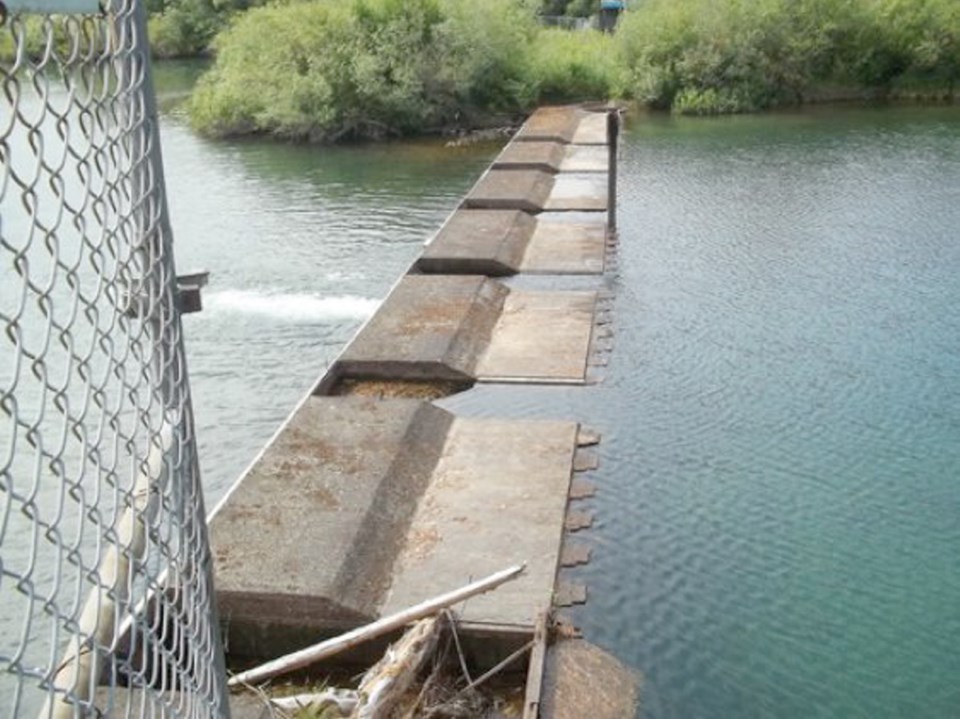The Cowichan River is getting so low there’s talk of pumping water over the weir at Cowichan Lake just to keep enough water downstream for spawning salmon, industry and a myriad of water users.
The water flow in the river over the last few weeks has dropped to five cubic metres per second from seven.
“It’s the earliest that this has ever happened,” said Rodger Hunter, co-ordinator of the Cowichan Watershed Board on Tuesday.
The reasons behind the dwindling flow “isn’t rocket science — it’s global warming biting us,” he said.
“We’re looking at pumps right now and we’d probably require a permit,” Hunter said. “The longer term thing is to raise the weir — if you raise the weir, you stockpile more water in the lake and we’d be a lot better off than we are this year.”
The next step is getting design drawings and funding.
The spring and summer inflows have dropped off in recent years, with a lower snowpack in the mountains melting with a smaller-than-normal spring rainfall.
“This year, we had a particularly low snowpack and we didn’t have much rain,” which led to the current situation, Hunter said.
In July 2012, there was so much water in Cowichan Lake that water came into the river over top of the weir, which is the outlet to the Cowichan River. This year, the lake level is 36 centimetres below the top of the weir.
Salmon, trout and juvenile steelhead depend on the river to survive.
“They’re in the river year-round — the adults migrating depend on those flows, too,” he said.
Salmon begin to suffer when the flows drop as they have. Less water means the amount of habitat is decreased and the temperature rises. Volunteers are on the river helping those salmon that are stranded in pools get moved to more open areas. Then those areas get crowded, said Hunter.
Recreational tubing is affected as well. While the upper river still has good areas for tubing, the river is so shallow downstream, it makes for a bumpy ride, Hunter said. “You’re either carrying the [inner tube] or you’re bumping along,” he said.
The Catalyst pulp mill at Crofton operates the weir and also uses water from the river.
“The issue there is it’s an old mill, so making major changes to gain significant efficiencies to water use is going to be a very costly initiative,” he said.
On the other hand, low water flows may force the mill to close temporarily and that would be costly for the mill and its 600 employees, Hunter said.
Calls to Catalyst were not returned Tuesday but on its website, the company says it collaborates closely with regulatory authorities regarding weir operation, and it engages with local stakeholders on water management through its involvement with the Cowichan Watershed Board.
There are two sewage outfalls that empty in the river, so less water also makes the contamination more concentrated. North Cowichan is working with Health Canada, Cowichan Tribes and Island Health to deal with the potential for problems.
There is a connection between the groundwater and the river, and a study is looking at the relationship.
Cowichan Valley residents are becoming more aware of the need for water conservation.
The chinook population had been gradually recovering but these kinds of hard years can set things back, he said.
“It’s not a great situation. If you have healthy fish going out into a changing ocean, they survive much better in that more limited environment.
“The nice thing about the Cowichan is we’ve got problems, but we’ve got solutions. This problem is preventable.”



